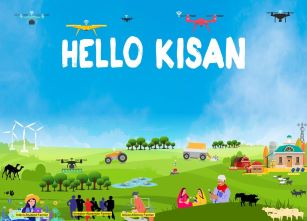
Trending News
How Urban Farming Can Save Consumers' Wallets and the Environment
The cost of a home-cooked vegetarian thali surged 11 per cent year-on-year (y-o-y) in September 2024, driven by rising vegetable prices, rating agency Crisil Ltd said in a report. It states that the rise in the vegetarian meal cost can be attributed to sharp increases in the prices of key vegetables, including onion, potato and tomato, which account for around 37 per cent of the cost. The rising cost of living, particularly the escalating prices of fresh vegetables, has become a significant concern for urban consumers. Traditional farming practices, often located far from urban centers, contribute to increased transportation and storage costs, which are ultimately passed on to the consumer. However, a promising solution lies in the burgeoning field of urban farming.
Understanding Urban Farming
Urban farming involves cultivating crops within urban areas, utilizing rooftops, balconies, community gardens, and vacant lots.
This innovative approach leverages underutilized spaces to produce fresh, locally grown food. By minimizing the distance between production and consumption, urban farming can significantly reduce transportation costs, leading to lower prices for consumers.
Key Benefits of Urban Farming for Consumers
Reduced Food Costs: Elimination of Middlemen: Urban farming often bypasses traditional supply chains, reducing the number of intermediaries involved. This cuts down on costs associated with storage, transportation, and marketing, resulting in lower prices for consumers.
Direct-to-Consumer Sales: Many urban farmers sell their produce directly to consumers through farmers' markets, community-supported agriculture (CSA) programs, or online platforms. This direct-to-consumer model eliminates markups and ensures that consumers receive the best possible prices.
Access to Fresh, Nutritious Food:
Reduced Food Miles: By producing food locally, urban farming minimizes the distance that produce travels from farm to table. This reduces the time between harvest and consumption, preserving the freshness and nutritional value of the produce.
Organic and Sustainable Practices: Many urban farmers prioritize organic and sustainable farming methods, avoiding the use of harmful pesticides and chemicals. This results in healthier, more nutritious food for consumers.
Environmental Benefits:
Reduced Carbon Footprint: Urban farming reduces the carbon emissions associated with long-distance transportation of food. This contributes to a healthier planet and helps mitigate climate change.
Conservation of Resources: Urban farmers often employ water-saving techniques like hydroponics and aeroponics, which require significantly less water than traditional agriculture. Additionally, urban farming can help reduce soil erosion and improve air quality.
Community Building and Empowerment:
Social Interaction: Urban farming fosters a sense of community by bringing people together to grow food and share knowledge. It can also create opportunities for social interaction and skill-sharing.
Economic Opportunities: Urban farming can create jobs and economic opportunities for urban residents, particularly in disadvantaged communities. It can also contribute to local economic development by generating income and supporting local businesses.
Conclusion
Urban farming offers a compelling solution to the rising costs of fresh produce and the environmental challenges associated with traditional agriculture. By reducing food miles, eliminating middlemen, and promoting sustainable practices, urban farming can empower consumers to make healthier and more affordable food choices. As cities continue to grow, urban farming has the potential to revolutionize the way we produce and consume food, ensuring a more sustainable and equitable future for all